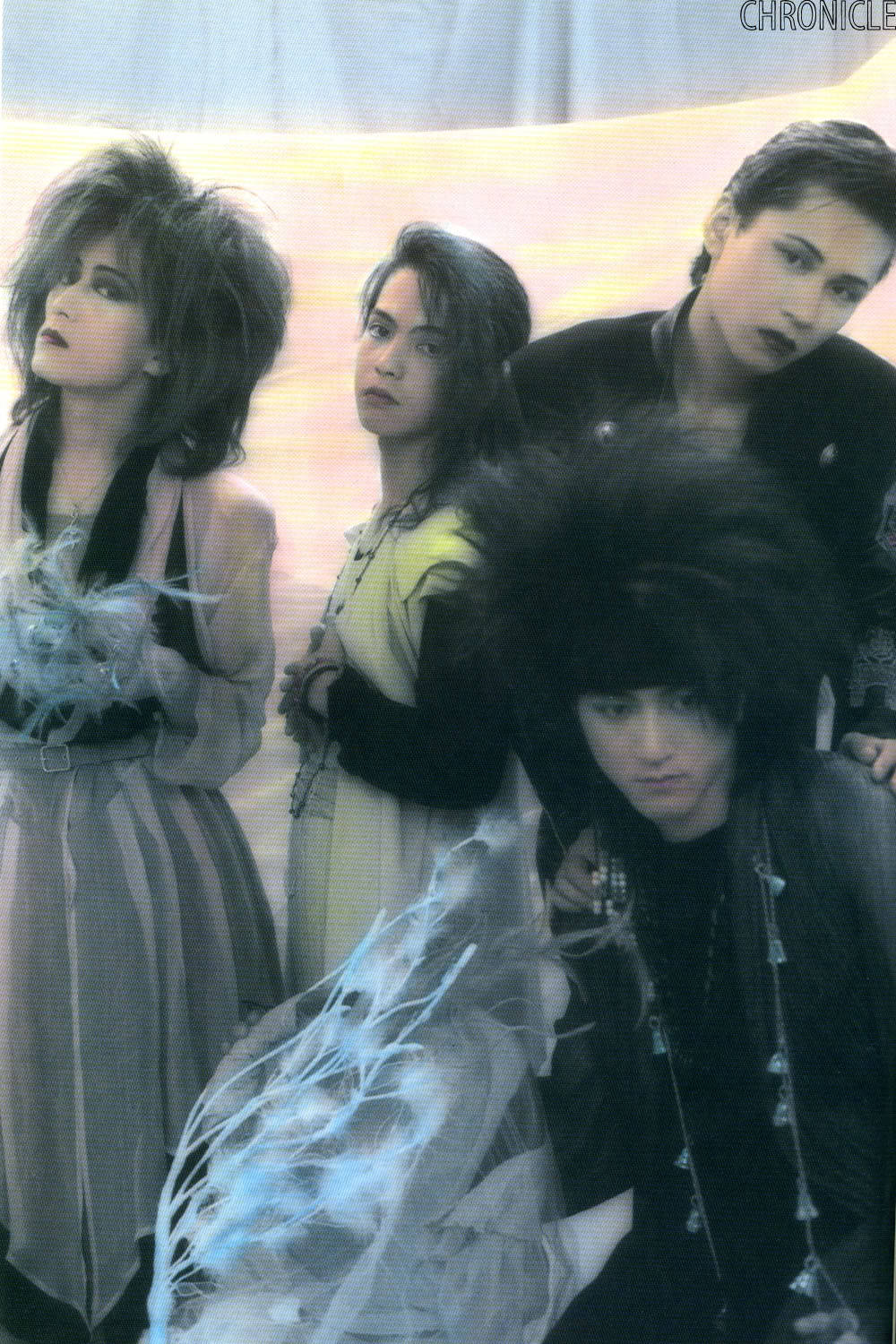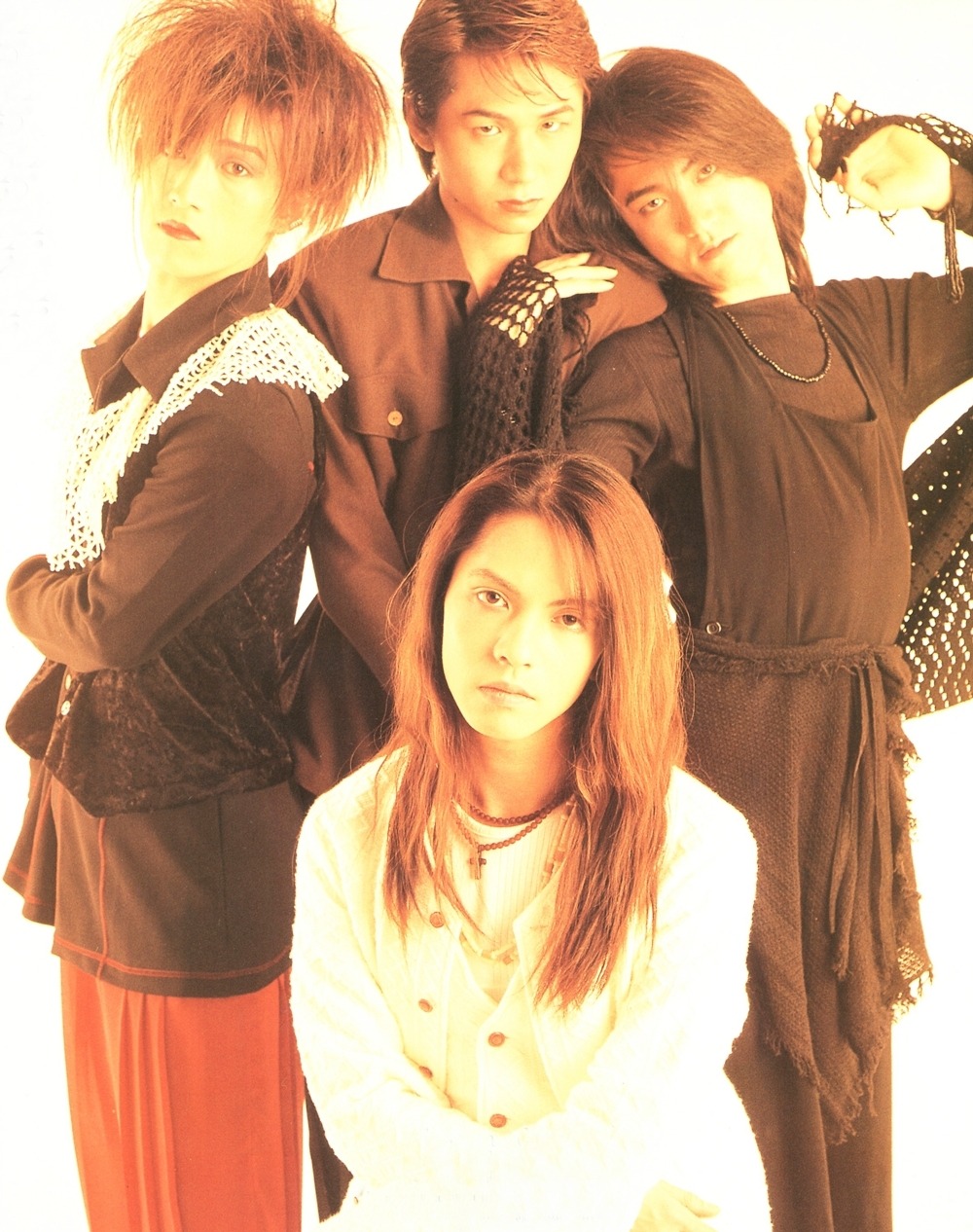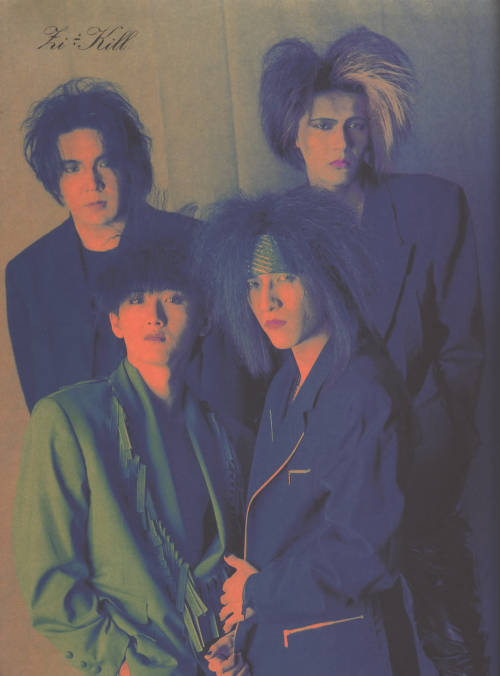Since I haven't found a really good answer for that question anywhere on the net I have been doing my own research. Please remind that I am no expert on the history of Visual kei, as there is very little good information in non-japanese english about its development and my first contact with the music was around 2004 or 2005. But I share some of my knowledge, subjective opinions and thoughts about it and try to give people, who have never heard of it, a better impression what it is than what most other sites or blogs offer as information.
This is part one and contains the following subjects:
Definition- what is kote kei?
How old school visual kei started in the 80s (Glam Metal)
The first Visual kei bands (end of the 80s/early 90s)
Definition and use
Well, first lets start to find out what Kote kei means. Kote kei is a rather new term that has been coined primary by visual kei fans on the net, but in the mid of the 10s of the year 2000 a few bands also have described themselves as this. I personally see the term Kote kei indeed as an internet phenomenon; visual kei groups in the 90s didn't knew this term and neither did they call themselves as such, which is also logically, because Kote kei refers to "traditional styled bands" or "old school visual kei" therefore it couldn't be known at this time.
Kote kei may be a pure artificial term based on a japanese word and shortened to sound better; you will find the japanese adjectives for "classic" as Koten-Teki(na) and "classic art/work" as Koten (古典). The kanji 古 itself means either "something very old" (furu) or simply "old" (ko).
Kote kei refers to the old and "classical" bands of visual kei, which started somewhere around the end of the 80s (though many fore thinkers like Buck-Tick or D'erlanger already formed in the mid-eighties). People use Kote kei to draw a distinct and clear line between 80s and 90s visual rock music and today's modern visual kei "movement", the latter which is often described as "Neo visual kei". Though modern visual bands keep re-using old and traditional elements created by their ancestors there is still a big difference in sound, music, expression and especially in clothing and visuals between those two. Fans also have a nostalgic feeling towards the kote kei term as it represents a music scene of the past that didn't really survive. Only a few bands today are playing classic or old school visual kei and none of them are currently very successful.
Brief history of old visual kei
The 80s and Metal origins
As already mentioned bands like Buck-Tick and D'erlanger were in some way fathers of visual kei. Though the first never really considered themselves to be a visual band they have been the most influential as Buck-Tick was one of the first biggest rock acts Japan has had and they were able to fill big concert halls quite easily. Even today they are a successful band with a long musical history and having a great fan base, consisting of people of different generations. They are often stated as the main reason for musicians to start their own bands and were generally known to inspire quite a lot of young people to become musicians.
D'erlanger have been originally a hard rock and glam influenced band but changed their style pretty quickly into a more poppy and new wave driven style. They instantly became stars with their famous single La Vie en Rose, which also featured a very homoerotic PV (Promotional Video) and their protagonists wearing tons of make up and being dresses in a punky attire. With these song, video and look they have already became an archetype for the later visual kei genre.
Singer Kyo went to the band Die in Cries later, but he reunited his old band D'erlanger in 2007.
 |
| D'erlanger |
 |
| Buck-Tick |
At the end of the 80s numerous bands followed, most of them coming from the local Heavy Metal, Punk or Glam scene. X Japan are one of the best known examples. In their early career they have been a Heavy Metal band with a fast playing style, reminiscent of speed metal bands. They became softer over the time, adding pop and wave tunes to their music and increasing the number of ballads. Their stylistic change was quite similar of those D'erlanger had. X Japan also transitioned from a Glam look, that was a homage to the popular Metal formation "Kiss" to the old school visual style- especially their drummer Yoshiki, who started to cross-dress, has had a typical old visual kei look and their guitarist hide would also become an icon for visual kei fans later in the 90s. Most of their fans though will not call X Japan a visual kei band and see them rather as a group who have paved the way for the style.
Bands of a similar look or style as X are quite often seen as "proto-visual kei" too; those are AION, Sex Virgin Killer, Harkenkreuz, Billy and the Sluts, Decameron, Strawberry Fields and By-Sexual.
 |
| AION |
 |
| By-Sexual |
Another band worth of mention are Color, a japanese proto-visual kei band that have their stylistic origins in punk-rock. Known for their crazy big hair and weird videos they have become a very important group in the development of the visual kei "genre". They are not cited very often as fathers of visual kei and seem pretty underrated, but their vocalist Dynamite Tommy became founder of the most important label to the visual kei movement, Free-Will. Dynamite Tommy would also become the manager of many known visual bands, including Dir en grey.
Free-Will has signed many bands that have been important contributors to the visual kei history, including By-Sexual, Kamaitachi (with their Drummer Crazy Danger Nancy Ken-chan becoming Kenzi, the vocalist of Anti feminism later), Gilles de Rais and more.
 |
| Color |
The first "offcial" visual kei bands
Now... how official is official? I guess the difference lies more in a historical complex. So far most of the bands presented here have started their careers during a time long before the the term "visual" existed. Most of the proto-visual kei groups we have met started out in the Metal or Punk scene and obviously they identified themselves with the music scenes they originally came from. At the end of the 90s we already have signs of bands forming that come closer to what we would describe as classic or traditional visual kei; bands that fuse punk, glam and hard rock with pop, new wave and post-punk (and in some cases even gothic rock) to create a patchwork music genre. Visually the early 90s visual bands were pretty similiar to the proto-visual bands coming from the punk or Metal scene: they've got big, teased and backcombed hair with tons of hairspray, coming in all kind of bright colours and different shades. The clothing ranged from punk outfits (fishnet, spikes, leather) to typical new wave clothing (black gowns, pointed shoes, black or blonde dyed hair) or fetish wear (leather, corsets, heeled boots and lots of PVC). Early visual bands from the beginning 90s looked even different from later Kote bands of the mid and late 90s, but all of them tried to develop or base their music and style on those of big early 90s acts such as Luna Sea.
Luna Sea may be the visual kei band. They are the best known visual band and their music and style have been cited, copied and been taken as inspiration numerous times. Their legacy is even noticeable in modern visual bands.
They started activities in 1989 under the name "Lunacy" playing in little clubs until they got signed to Yoshiki's (X Japan) own label Extasy-records. Their demos and live recordings show clearly their punk origin. Over the time Luna Sea changed their style from punk-rock with a dash of new wave and pop to a more progressive or indie rock style as did their appearance that changed from the typical old visual kei style with lots of leather and make-up to no make-up and formal or "normal" clothes. Their early material and first albums became the most influential visual kei releases of their time.
With their single Rosier they had their mainstream breakthrough and created their most popular song to date.
After disband all of their members started their own solo projects. In 2008 they came together again to play at the hide memorial summit and released their first new single after almoszt eleven years in 2011.
 |
| Luna Sea |
 |
| Luna Sea |
It wasn't until the 90s that the term "Visual Rock" has been started to be used for these bands. The term has its origins in X Japans band "slogan", which was "Psychedelic Violence Crime of Visual Shock". Other people want to trace the origin back to a japanese hard rock group called Visual Scandal, who could also be seen as proto-visual because of their glam appearance.
Other bands of that time include Glay, Zi:Kill, Ladies Room, Penicillin, L'Arc-en-Ciel or Eins:Vier.
 |
| Visual Scandal |
Glay and L'Arc-en-Ciel are both notable for becoming not only very popular but also as so called "Soft visual kei" bands. I've found the term "white kei" used for them too, but I don't believe it is really used as much as soft visual kei. Soft visual kei is notable for the toned down visual of the band members (less and basic make-up, light or bright colours and rather ordinary clothing or clothes tat can be easily worn on the street or daily) and softer poppy music that is more mainstream compatible.
As we go to the mid of the 90s we dive into the world of Nagoya kei, and the darker visual kei music that is rather obscure or stays in the underground. It is the time where visual kei reached its highest peak of mainstream success and popularity. It is also the borderline where many visual kei bands change from their more dark or serious image to a more mainstream accessible one, causing the bands to lean against sift visual kei. This happened to a lot of groups, for example Baiser, L'Arc-en-Ciel,
Rediean;Mode or Shazna.
Pics of the typical first wave old school visual kei look:
 |
| Early L'arc~en~Ciel |
 |
| L'arc~en~Ciel |
 |
| Zi:Kill |
 |
| Strawberry Fields |
 |
| Kamaitachi |
 |
| Decameron |
 |
| REDIEAN;MODE |
 |
| Billy and the Sluts |
 |
| Baiser |
Next Part's topic: Nagoya-kei and its influence, indie labels and darker visual kei bands (Soleil, Matina, etc), the decline of classic visual kei


















Keine Kommentare:
Kommentar veröffentlichen